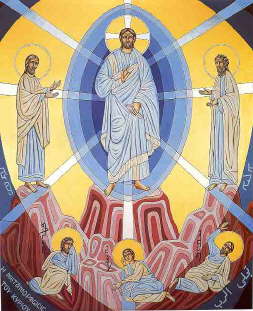 Sunday, 04 March 2012 00:00
Sunday, 04 March 2012 00:00
On this Second Sunday of Lent, let us reflect on three interrelated themes: faith in God, as exemplified by Abraham; suffering, the precondition for discipleship, as explained by Jesus; and transfiguration, the sign of God’s fidelity to His Son and prefiguration of what God promises all who are faithful to Him.
On this Second Sunday of Lent, let us reflect on three interrelated themes: faith in God, as exemplified by Abraham; suffering, the precondition for discipleship, as explained by Jesus; and transfiguration, the sign of God’s fidelity to His Son and prefiguration of what God promises all who are faithful to Him.
Abraham’s faith in God. Who has not entertained the question: what loving God would demand the sacrifice of one’s son in order to test one’s faith? Biblical scholars inform us that we need not interpret the story literally, that of a God seeking the blood of an innocent child. They suggest that we situate the story within its historical-cultural context: the story was a declaration of the early Israelites’ repudiation of child-sacrifice, a common enough practice in the ancient Mediterranean. While the gods of other tribes demanded the blood of the innocent, not so the God of the Israelites. Moreover, as it is, the focus of the story is not on God’s demands, but on Abraham’s resilient faith in God. The story is meant to inspire in us faith in the God-of-life, which involves total surrender to the Lord, despite His mysterious and confounding ways.
Jesus’ Transfiguration. The transfiguration of Jesus takes place after Peter’s confession that Jesus is the Messiah and after Jesus’ first prediction of his passion and death. Clearly, Mark the evangelist wishes to underscore the interrelationship between Jesus’ passion and glorification. In the passage preceding Jesus’ transfiguration, Mark presents Jesus explaining the preconditions for discipleship, the invitation to deny oneself and to take up one’s cross, the necessity of losing one’s life in order to save it. Suffering and death are preludes to resurrection and glorification.
We must be careful not to glorify suffering, but rather construe suffering as the consequence, often times, of faithful discipleship to Jesus. Often, our suffering is brought about by others who cannot bear the righteousness of the Lord, by sin in the world which extinguishes the radiance of all who bear witness to God’s light.
Suffering, the condition for discipleship. Lest we conclude that God wills our suffering before redeeming us, we need to bear in mind that God does not desire or delight in our suffering. God desires that we be faithful to Him, that we witness to the values of the Kingdom, and in doing so, be conformed to and united with Him.
In relation to Jesus’ Paschal Sacrifice, God did not intend Jesus’ death on the cross. Jesus’ crucifixion was the consequence of his fidelity to God’s will. God willed that Jesus incarnate and reveal God’s unconditional love; God willed that Jesus proclaim the coming of God’s Kingdom, God’s reign of justice and mercy. The cross was the consequence of Jesus’ fidelity to his mission.
Perhaps this is the reason our First Reading recounts Abraham’s sacrifice of Isaac; that is, in order to underscore the invitation of God to place our faith in Him and stress the demand of the covenant to be faithful to our God who is ever faithful to us. God desires not our blood, not our suffering, but rather faith in Him, fidelity to Him.
Suffering Love transfigured. Jesus who is both divine and human exemplifies this desired mutual fidelity between God and humanity. On the one hand, Jesus, who is God in human form, embodies this total fidelity to God, a steadfastness which persecution and ultimate execution could not stifle. On the other hand, as the divine Son of God, Jesus’ cross also signifies God’s fidelity to humanity. In Jesus’ crucifixion, we can truly say that God has poured out his life for us. False accusations, scourging and crucifixion proved powerless in breaking the will of Jesus, from pressuring him to retract his message of the Father’s infinite love for us, to renege on his commitment to us, the poor and oppressed most especially. On the Cross of Christ we glimpse the radical extent of God’s fidelity to us, faithful Love unto death.
In sum, the First Reading extols Abraham’s faith in God in and through the difficulties in life and the mystery of God’s unfathomable ways he confronted. Our Gospel reading on Jesus’ transfiguration promises us that God will not be outdone by our fidelity to Him. Jesus’ transfiguration, a foretaste of his resurrection, signifies God’s fidelity to His Son and to all who are faithful to Him. Sin and death will not prevail. God’s steadfast love will overcome.
Second Sunday of Lent
Philippine Star Column
Photo source: http://4.bp.blogspot.com










